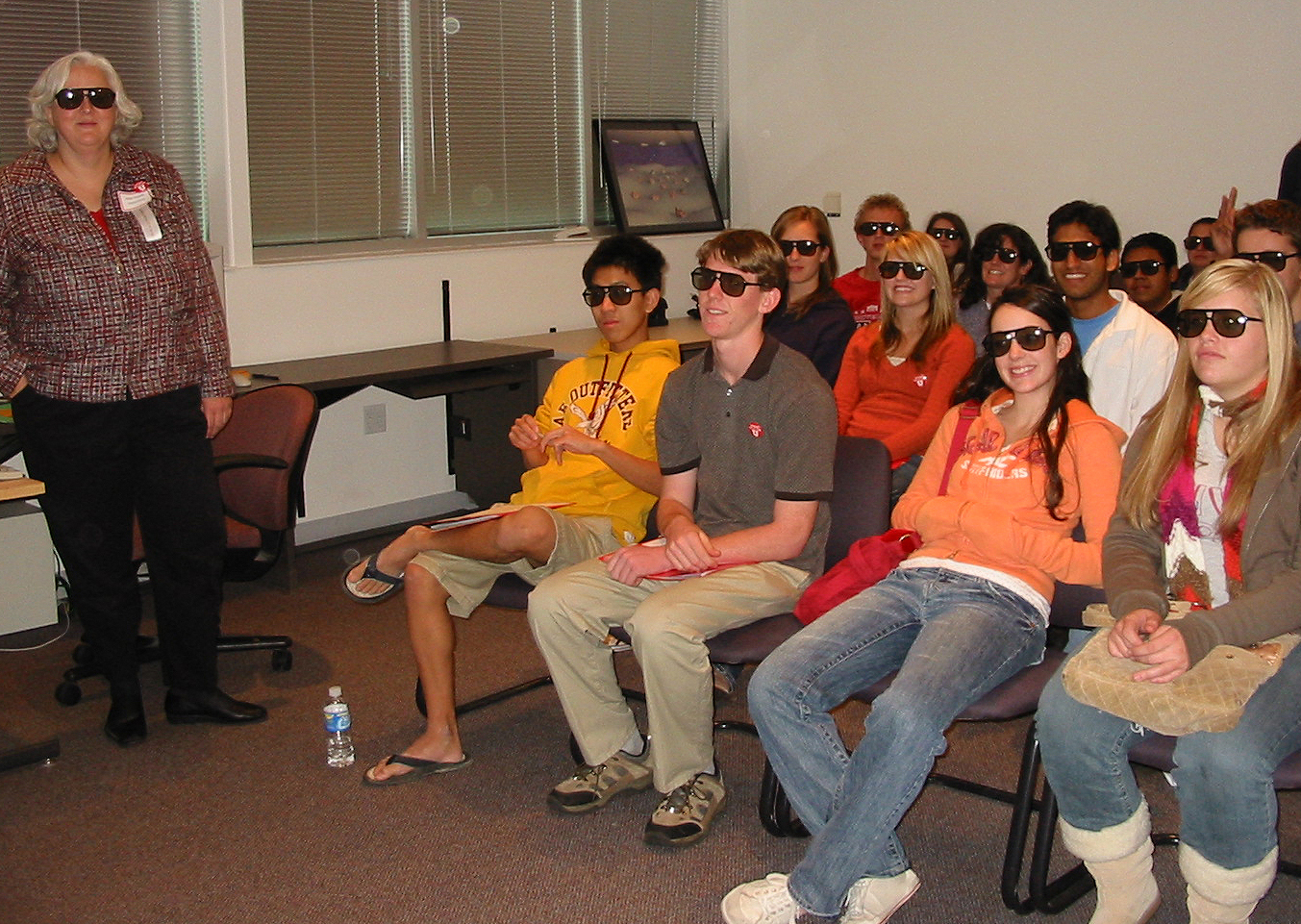
What: Utah and Idaho high school students attend a full day of science workshops and get academic advice about college at the University of Utah
Date: Saturday, Nov. 10, 2007
Time: 9 a.m. to 3:30 p.m.
Place: Olpin Union Building and various classrooms on the University of Utah campus
FREE AND OPEN TO THE PUBLIC
Hundreds of Utah and Idaho high school juniors and seniors will get an introduction to education and research opportunities at the University of Utah during the 19th annual Science Day at the U on Saturday, Nov. 10. The event is hosted by the university’s College of Science and College of Mines and Earth Sciences.
Science Day is the university’s largest student recruitment event. There is no cost to students, parents or educators. Lunch is provided. Most students were invited because they expressed an interest or teachers nominated them. However, any Utah and Idaho high school senior or junior may attend simply by registering at the Olpin Union Building’s main foyer on Nov. 10.
News media representatives are invited to cover the event in the Olpin Union Building and science buildings on main campus.
Science Day at the U begins with an opening reception featuring a keynote talk by Raymond F. Gesteland, distinguished professor of human genetics and vice president for research at the U. Students then receive academic advice about specific majors, science-related careers and undergraduate research offered by each department. Parents and educators may attend a presentation given by the Office of Student Recruitment and High School Services titled “How to Prepare Your Student for College.”
After lunch, students attend science workshops in their areas of interest presented by faculty from the College of Science, the College of Mines and Earth Sciences and the Utah Museum of Natural History. The following presentations may be of particular interest to news media:
— Noon to 12:45 p.m., “Monitoring Earthquakes in Utah and Yellowstone,” by Paul Roberson, earthquake specialist at the University of Utah Seismograph Stations, William Browning Building, Room 703. Students will tour the seismology laboratory, including several highly sensitive quake-recording instruments, and learn how the U monitors earthquakes throughout Utah and Yellowstone and Grand Teton national parks. Several small quakes occur each day in Utah, so it is possible students may witness one during the session.
— 1 to 1:45 p.m., “High Performance Computing Visualization,” by staff chemist Anita Orendt, in the INSCC building, Room 294. The Center for High Performance Computing has a 3-D visualization “wall” that measures 7.5 by 10 feet. Students will use special glasses to view examples of life-sized 3-D crystal structure models, renderings of biological systems and fire simulations.
— 1 to 1:45 p.m., “Extreme Makeover: Human Body Engineering with Metals,” by metallurgical engineering Professor Ravi Chandran, in the William Browning Building, Room 207. Students will be introduced to the science behind the design and production of artificial body parts including hip joints, cardiovascular stents, spine implants and electrodes – all products of metallurgical engineering.
— 2 to 2:45 p.m., “Physics in Action!” by physics lecture demonstration specialist Adam Beehler in the James Fletcher Building, Room 103. Students will be treated to a special array of experiments and demos that will educate and entertain. Topics will include gravity, velocity, electromagnetism and properties of air. Beehler will shoot a ping-pong ball through three soda cans, and explain electricity using a Tesla coil.
Every year, Science Day at the U attracts hundreds of students, parents and educators from as far north as Soda Springs, Idaho, and as far south as Blanding, Utah. It often is the first experience these students have on a university campus.
“We continue to draw large numbers of students from rural areas in the state – students willing to travel several hours each way to attend Science Day,” says Jim DeGooyer, program coordinator. “This event is very worthwhile. We are offering 43 workshop sessions that cover 24 specific research topics, and eight academic advice sessions presented by some of our finest faculty members.”
Academic departments as well as the Financial Aid and Scholarships Office and the Office of Residential Living will host information tables.
For more information, please contact the College of Science at (801) 581-6958 or visit http://www.science.utah.edu/cosdayedu.html to obtain a complete schedule of events.
